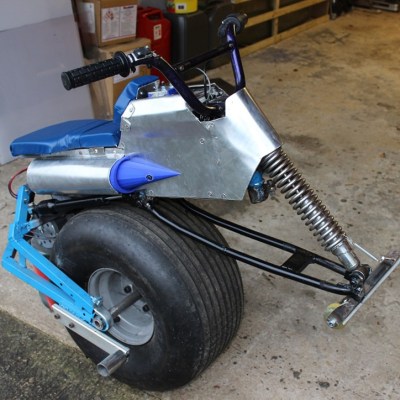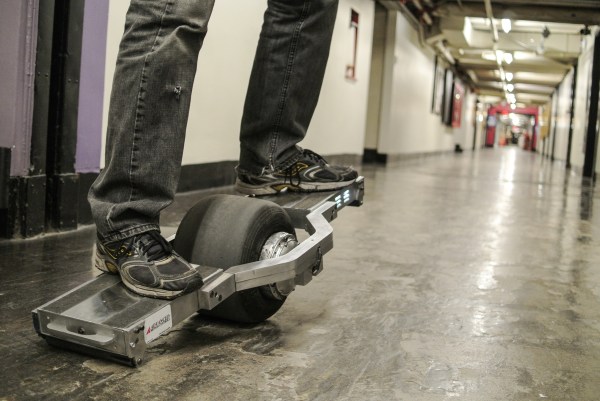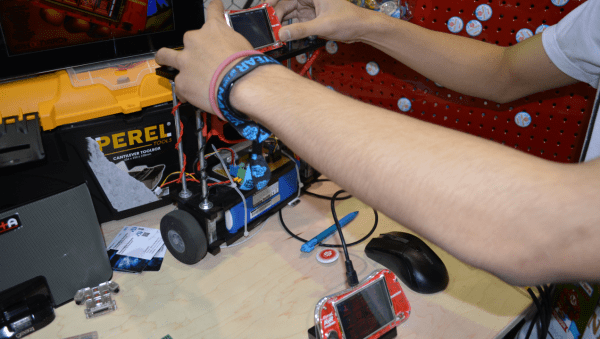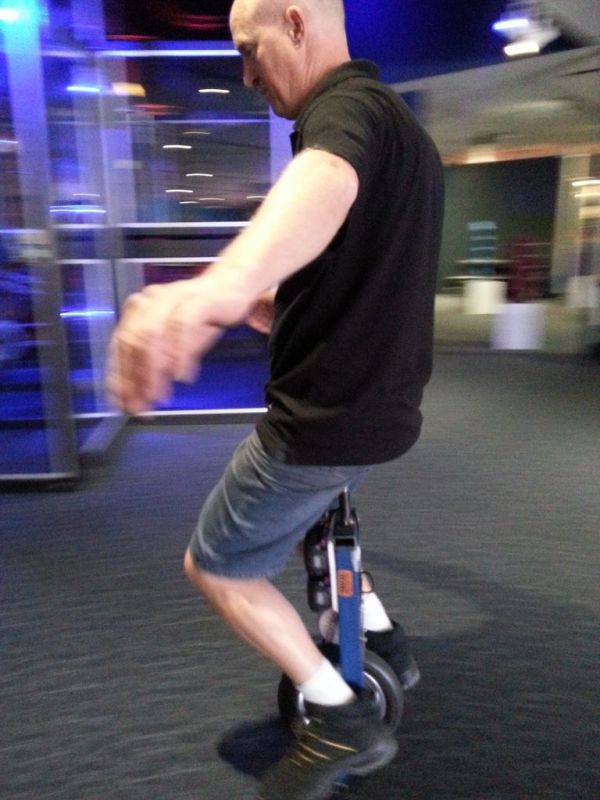[Nick Thatcher] is a serial builder of self-balancing rides. His various Segway clones and unicycles have until now suffered from one significant problem, that of portability when not being ridden. Taking one on a train was a significant undertaking, hardly convenient in a personal transport machine.
His latest design, the Plan-B, is an electric unicycle designed to address this problem to create a truly portable piece of commuter transport. It has been designed to be as compact as possible with the ability to fold to fit in a confined space, and the weight has been reduced to a minimum.
Power comes from a 24V 350W geared motor kept on a leash through a Dimension Engineering motor controller by an Arduino with a gyro to maintain the unit’s stability The battery is an ULTRAMAX LiFePO4 , and the single wheel is an inexpensive plastic wheelbarrow part with chain drive from the motor.
The result is both rideable and portable, though with a 10mph top speed not the fastest of personal transport. He’s posted a video which you can see below the break, showing him taking it on a train journey and traversing the British urban landscape.
Continue reading “[Nick Thatcher]’s Plan-B Is A Commuter Electric Unicycle”





 Since then it has been completely redesigned and now has a super fat kite-surfer wheel, a front crash skid with damper, and a variable geometry which allows it to steer properly despite just having one wheel. It does this by allowing the rider to shift their position relative to the wheel, instead of the seat always being rigidly locked directly above the axle.
Since then it has been completely redesigned and now has a super fat kite-surfer wheel, a front crash skid with damper, and a variable geometry which allows it to steer properly despite just having one wheel. It does this by allowing the rider to shift their position relative to the wheel, instead of the seat always being rigidly locked directly above the axle.












